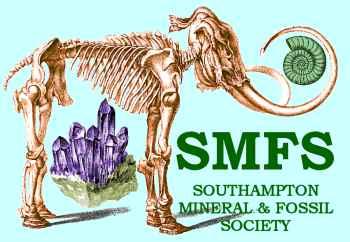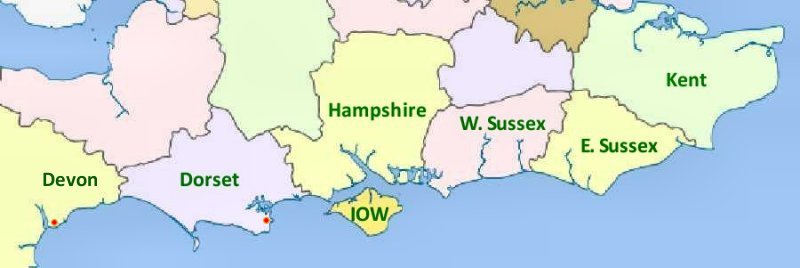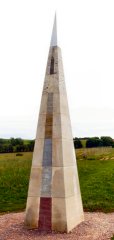|
Devon
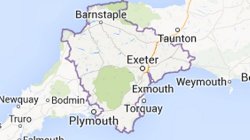
|
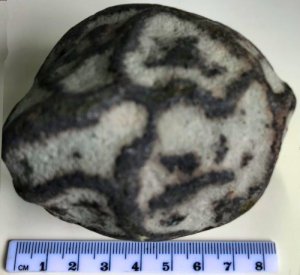
Radioactive uraniferous nodule from the Littleham Mudstone,
Littleham Cove, Devon. These nodules contain some very rare and unusual
uranium and vanadium minerals. G. Morse specimen collected 2014.
|
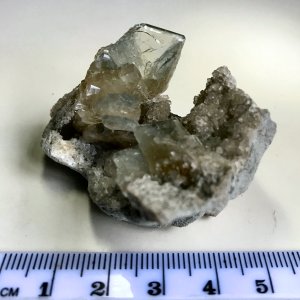
Pale blue, transparent baryte crystals to 30 mm from Peak Hill, Sidmouth, Devon. G. Morse specimen GM0228 purchased 2009.
Return to the top
|
|
Dorset
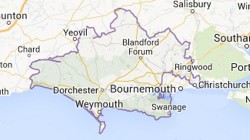
|
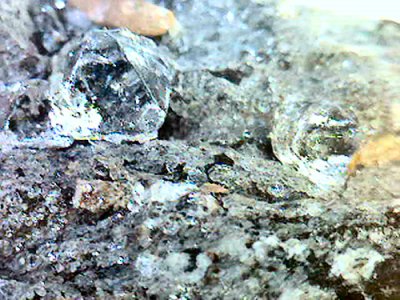
A clear 1.5 mm Alum-K crystal on shale from cliffs at
Kimmeridge Bay, Dorset. G. Morse specimen GM0418
collected 2017. These are incredibly rare as alum is water
soluble and they soon wash away in the rain.
|
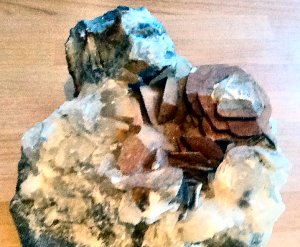
Iron oxide coated stack of rhombohedral, 'nailhead'
calcite crystals from Kimmeridge Bay, Dorset. B. Pitt specimen collected 2017.
|
|
|
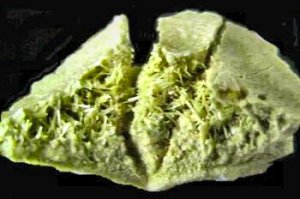
Sulphur, Rope Lake Head, Kimmeridge, Dorset.
J. W. Thomas specimen collected June 1974 on a Society field trip
to Dorset to see the rare occurrence of the cliff burning. The
cliffs around Kimmeridge are oil bearing shales that are prone
to spontaneous combustion at times. On the cliff top was a
large cavity with sulphur forming around the edge
from which this specimen was collected. Width of specimen = 140 mm.
|
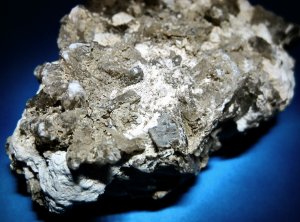
Earthy, white felsőbányaite (was basaluminite) on gypsum from Crookhill Brick Pit,
Chickerell, Dorset. G. Morse specimen GM0829 collected by J. W. Thomas in 1972.
The name basaluminite was discredited by the IMA in 2006 in favour of felsőbányaite after the original
location at Felsőbánya mine, Romania.
|
|
|
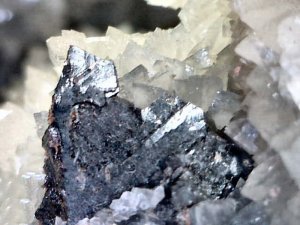
Metallic black plate of sphalerite to 7 mm in a calcite
lined cavity in a limestone nodule from Ringstead Bay, Osmington,
Dorset. G. Morse specimen GM0824 collected 1994.
|
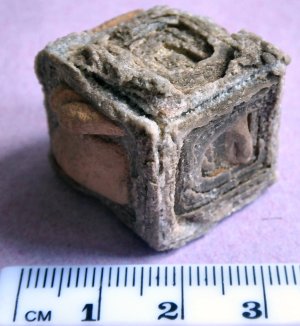
Gypsum pseudomorph after halite from Dorset.
Cubic crystal with hopper faces and some adherent brown sandstone.
G. Morse specimen GM0802 from a box of Dorset fossils that had been
given to an SMFS member by a former collector 2011.
Return to the top
|
|
Isle of Wight
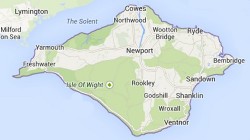
|
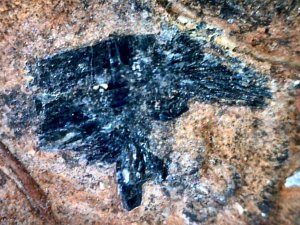
Vivianite in fossil cast, Whale Chine, Atherfield,
Isle of Wight. Width = 7 mm. G. Morse specimen GM0835
from J. W. Thomas 2009.
|
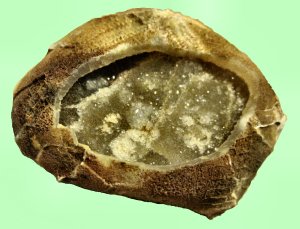
Druse of small, clear quartz crystals within a flint echinoid
(sea urchin, Micraster cortestudinarium) fossil from Grange Chine,
Isle of Wight. B. Pitt specimen collected 2017.
Return to the top
|
|
Hampshire

|
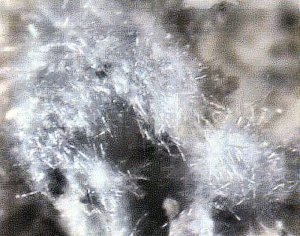
Halotrichite from cliff exposure, Barton on Sea,
New Milton, Hampshire. G. Morse specimen GM0137
collected by P. Bampton 1994. These iron aluminium sulphate
minerals grow on the cliff faces in warm dry weather as a result
of pyrite decomposition.
|
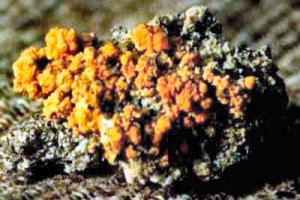
Butlerite, Hordle Cliff, Milford-on-Sea, Hampshire. These
small orange-red growths are the comparatively rare
hydrated iron III sulphate butlerite. This was originally thought
to have been copiapite but samples have been analysed and confirmed as butlerite.
Field of view = 50 mm. P. Bampton specimen.
|
|
|
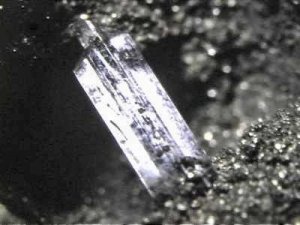
Gypsum in a pyrite nodule found in a field near
Winchester, Hampshire in 1972.
When broken in half a small cavity inside was found to contain
this perfectly clear gypsum crystal. Decomposition of the pyrite releases
sulphuric acid which reacts with the chalk host rock
forming insoluble gypsum. J. W. Thomas specimen.
|
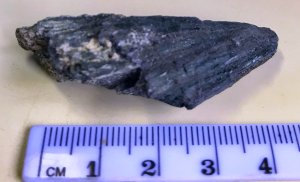
Vivianite, Chewton Bunny, Barton-on-Sea, Hampshire.
This was discovered after a cliff fall in September 1997 and a few good speceimens
were recovered. G. Morse specimen GM0834 purchased from R. Bowell in 2013.
Return to the top
|
|
West Sussex
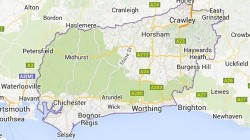
|
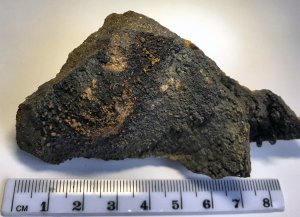
Goethite, Washington Sand Pit, Sullington,
West Sussex. Friable, ferruginous, cemented sand with
black 'ironstone' covered with minor stalactitic goethite.
G. Morse specimen GM0508 purchased from J. W. Thomas 2018.
|
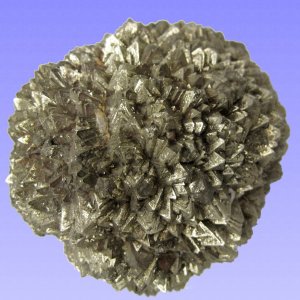
Pyrite from Climping Beach, Nr. Littlehampton, West Sussex.
Large brassy yellow, spherical nodule with good crystal form approximately 11 cm in diameter.
Collected on SMFS field trip 1994. The specimen was donated to Oxford University
Museum of Natural History in 1996. G. Morse original specimen GM0071.
Return to the top
|
|
East Sussex

|
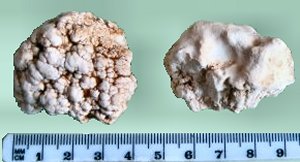
Aluminite, West Beach Cliff, Newhaven, East Sussex.
These are only found in one small area when they fall from the
cliff face where they form in a narrow band.
Collected on SMFS field trip 2017.
G. Morse specimens GM0419 & GM0420.
|
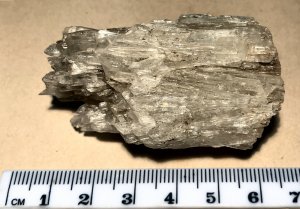
Calcite from Plumpton Plain, Plumpton, East Sussex.
Large crystalline masses of columnar calcite can be found in the
field margins on Plumpton Plain. It is thought that these form in
solution cavities in the chalk downs and are ploughed up to the surface.
Collected on SMFS field trip 2016. G. Morse specimen GM0271.
Return to the top
|
|
Kent
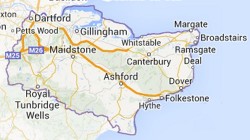
|
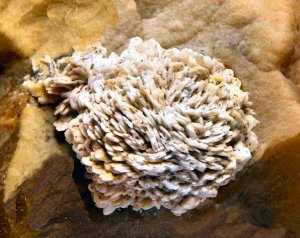
Baryte, Warden Point, Isle of Sheppey, Kent.
Specimen about 18 mm in diameter photographed in situ
on SMFS field trip 2015. Unfortunately the baryte became
detached but was preserved whole.
G. Morse specimen GM0742.
|
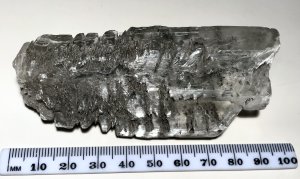
Gypsum from Warden Point, Isle of Sheppey, Kent.
Large twinned columnar crystal of gypsum with some clay inclusions.
Collected on SMFS field trip 2015. G. Morse specimen GM0807.
Return to the top
|
